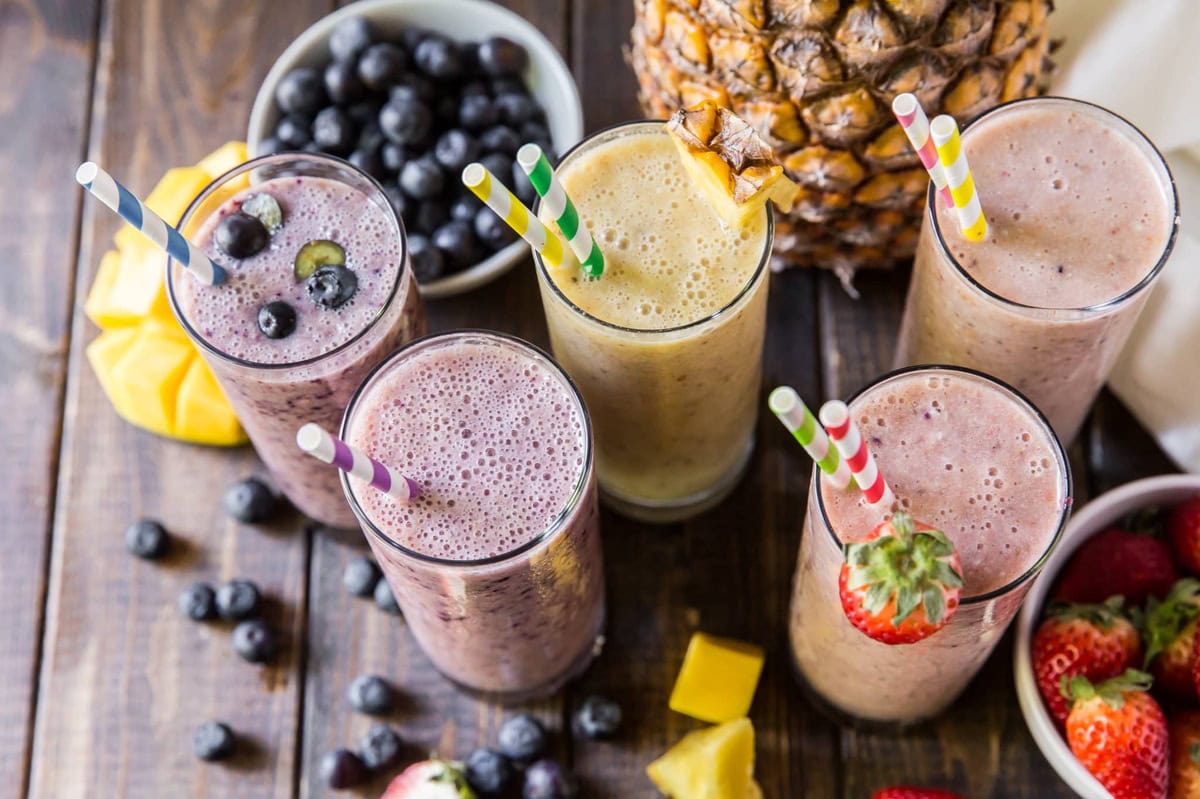In recent years, plant-based living has grown rapidly as more people embrace vegan diets for health, sustainability, and ethical reasons. As we step into 2025, smoothies remain one of the easiest and most flavorful ways to pack essential nutrients into a single, convenient serving.
With greater access to superfoods, plant-based proteins, and improved food technology, creating nutrient-rich smoothies has become simpler than ever. Using seasonal, locally sourced ingredients enhances flavor and supports both environmental and community goals.
Thanks to modern blending tools and a diverse selection of functional ingredients, smoothie-making is accessible to beginners and enthusiasts alike. This article explores key ingredients, balancing techniques, and customization tips to help you craft delicious vegan smoothies tailored to your health goals.
Selecting Nutrient-Dense Ingredients
1. Choosing the Right Base Ingredients
A great smoothie starts with nutrient-dense ingredients—foods rich in vitamins, minerals, antioxidants, and healthy fats. These choices ensure your drink is both nourishing and satisfying.
Fruits and Vegetables
- Leafy greens (spinach, kale) — packed with vitamins A, C, and K.
- Berries — low in sugar and high in antioxidants.
- Bananas & avocados — provide creaminess, potassium, and healthy fats.
Plant-Based Proteins & Whole Grains
- Pea protein, hemp seeds, nut butters.
- Oats or quinoa to boost fiber and energy.
By focusing on whole, minimally processed foods and choosing locally sourced produce when possible, you create smoothies that taste amazing and support overall health.
Balancing Macronutrients
Balanced smoothies combine carbohydrates, protein, and healthy fats to support sustained energy, fullness, and overall wellness.
Carbohydrates
- Fruits like berries, bananas, and mangoes.
- Vegetables such as spinach, kale, or carrots.
- Whole grains like oats for added fiber and texture.
Proteins
- Plant-based powders: pea, hemp, brown rice.
- Whole-food options: nut butter, chia seeds, silken tofu.
Healthy Fats
- Avocado, flaxseed, walnuts, almonds.
- These improve creaminess and support brain and heart health.
A useful guideline: aim for roughly 40% carbs, 30% protein, 30% healthy fats—then adjust based on your lifestyle and dietary needs. As sustainability becomes more important, expect more eco-friendly and locally sourced ingredients to dominate smoothie choices in 2025.
Incorporating Superfoods
Superfoods elevate the nutritional profile of your smoothies by adding antioxidants, vitamins, and unique health benefits. Even small amounts can make a big difference.
- Spirulina — high in protein, iron, and B vitamins.
- Chia seeds — rich in omega-3s and fiber.
- Flaxseeds — support digestive and heart health.
- Goji berries & acai — antioxidant-dense immune boosters.
Start with small portions for strong flavors like spirulina, and mix multiple superfoods to gain a broader nutrient profile. With advances in food tech and sustainability trends, organic superfoods will continue to become more accessible.
Utilizing Sustainable Practices
Sustainability plays an increasingly important role in modern nutrition. Making environmentally conscious choices in your smoothie preparation can significantly reduce your ecological footprint.
Sustainable Strategies
- Choose seasonal produce: fresher, more nutritious, and often more affordable.
- Reduce waste: blend edible peels, use beet greens, and compost scraps.
- Select low-waste packaging: purchase produce with minimal or recyclable packaging.
Emerging technologies such as vertical farming, hydroponics, and smart kitchen devices will make sustainable eating even more convenient in 2025.
Customizing for Specific Health Goals
One of the biggest strengths of vegan smoothies is their flexibility. With the right ingredients, you can tailor each blend to support specific goals—whether that’s energy, weight management, muscle building, digestion, or immune health.
Goal-Focused Additions
- Weight loss: leafy greens, cucumber, berries, chia seeds, light healthy fats.
- Muscle gain: protein powders, nut butter, tofu, oats, bananas.
- Immune support: vitamin-C fruits, ginger, spirulina, citrus.
- Digestive health: probiotic vegan yogurt, fiber-rich fruits, flaxseed.
Tracking how different ingredients affect your energy and digestion can help you fine-tune your recipes. As personalized nutrition grows in popularity, your smoothies can easily become customized wellness tools that fit your lifestyle perfectly.




Health | No Comments » on How can I make healthy vegan smoothies in 2025?